Affiliate disclosure: This post may contain affiliate links. Please see our Privacy Policy.
Yarrow tincture is a simple alcohol extract with a number of uses, both internally and externally.
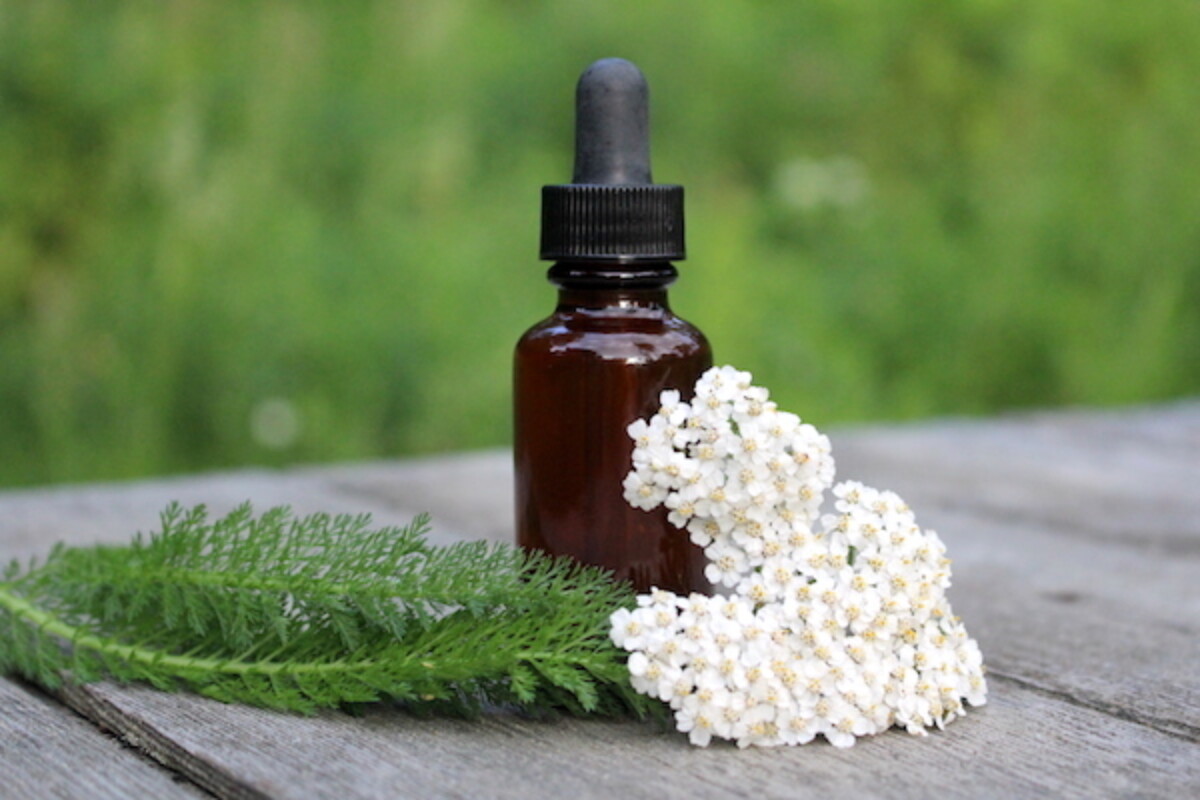
I had the opportunity to test our yarrow’s renowned blood-stopping ability first hand, and it does indeed work quickly.
A few years ago I was at a primitive skills class at the Roots School here in Vermont, learning to make flint knapped arrowheads for primitive arrows. I was loving the class, and really getting into my creation when my tool slipped suddenly.
A sharp shard embedded itself into my wrist, and immediately started gushing blood.
Before I could even react the person sitting next to me pulled out a spray bottle of yarrow tincture from the homemade buckskin bag at her feet. (That’s one of the awesome things about ancestral skills classes, someone always has a homemade tool/salve/etc right at hand with them just in case.)
I pulled the shard out, and she sprayed the cut. We both watched as the wound puckered up instantly and the bleeding stopped even before she applied pressure.
That, my friends, was like watching magic first hand. No wonder they call yarrow “herba militaris” in the ancient world! I can imagine how life-changing a patch of this would be during wartime.
From then on, yarrow tincture has been in my medicine cabinet, though through years of good luck I haven’t needed it often, besides the occasional skinned knee on my rambunctious children.
In the meantime, I’ve also learned that yarrow tincture has wonderful internal benefits, so now there’s both a spray bottle and an amber dropper bottle in my medicine cabinet.
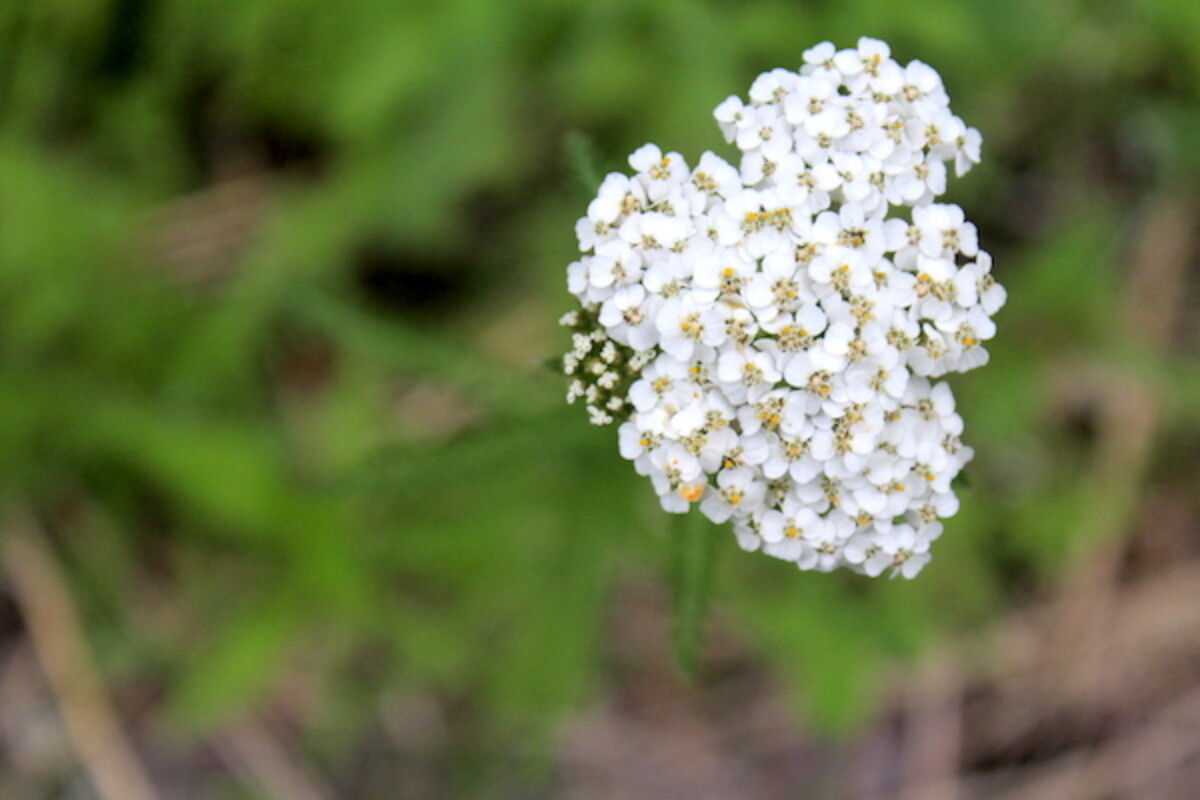
Benefits of Yarrow Tincture
For many, many thousands of years, the medicinal benefits of yarrow have been used to treat an array of ailments.
In fact, I was just reading about how, in 2012, an archaeological team analyzed the dental tartar on 50,000-year-old teeth found in a cave in Northern Spain and found traces of plant material. As it turns out, yarrow was ingested by Neanderthals and, because of its bitter taste, may have even been used medicinally.
Yarrow makes frequent appearances throughout history. There’re references to yarrow in classical Greek mythology (its genus name, Achillea, comes from the story of Achilles, who carried yarrow with him in order to treat his soldier’s wounds).
There’s also plenty of recorded evidence to show that yarrow was used medicinally as well as in beer-making throughout the Middle Ages. The fact that yarrow has so many benefits and is, for the most part, so easy to find, makes it such a valuable addition to any first-aid kit.
As my flint-shard story above demonstrated, yarrow is an extremely effective styptic (a styptic is any type of astringent herb that stops bleeding). Not only does yarrow stop the bleeding, but it also works in several different ways to speed up the wound-healing process as a whole.
Yarrow helps prevent infection, is a natural analgesic, and reduces inflammation (Source).
For all of these same reasons, yarrow tincture is perfect when used externally to treat minor burns, cuts, bruises, and insect bites.
Yarrow tincture may also be taken internally for a variety of issues.
Yarrow contains bitter flavonoids, which are appetite-stimulating aromatic compounds that encourage saliva and bile production for healthy digestion. Its anti-inflammatory properties also help soothe gut inflammation, which can cause upset stomach or heartburn.
A tincture made from yarrow flowers provides rapid relief from congestion or cough from a cold or the flu when rubbed into the chest. When taken internally, yarrow facilitates sweating and acts an immune-booster, both actions that help your body get better, faster.
Taken as a tincture or a tea, yarrow is a powerful anti-spasmodic that can be used to alleviate painful menstrual cramping and any intestinal distress that goes with it.
Yarrow Contraindications
Avoid taking yarrow while pregnant; by causing the smooth muscle lining of the uterus to contract, it could cause an accidental miscarriage.
Yarrow should be avoided if you have an allergy to plants in the Asteraceae family (like daisies, ragweed, marigolds, or sunflowers).
If you have a bleeding disorder, check with a health practitioner before using yarrow — in some cases it can prevent blood from clotting.
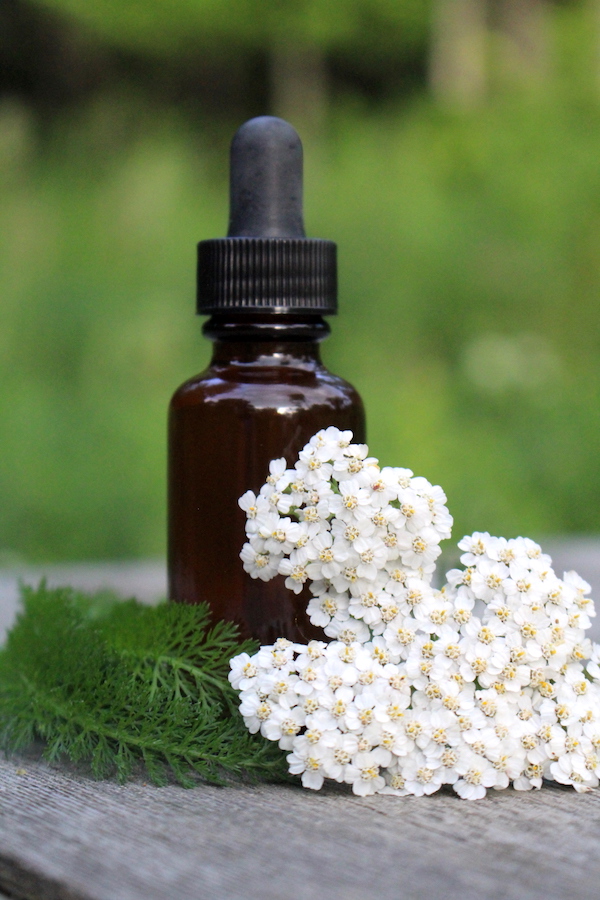
Harvesting Yarrow for Tincture
The best possible time to harvest wild yarrow is on a warm and sunny day, around mid-morning when the dew has evaporated off the leaves and flowers, but before the plant begins to droop under the hot sun. As with any foraging expedition, make sure you have permission to gather yarrow and that the plants haven’t been sprayed.
To harvest yarrow, cut the stems about halfway down the stem. The flowers should be open and healthy-looking, avoid plants with brown, sad-looking blooms. At this point, you can dry the yarrow or, as I like to do for tinctures, use it after being freshly picked.
If you don’t have any wild yarrow close by, you can also purchase dried yarrow flowers to use for making tinctures. Dried plant material has a maximum shelf life of two years, so if you already have dried yarrow at home make sure it’s relatively fresh.
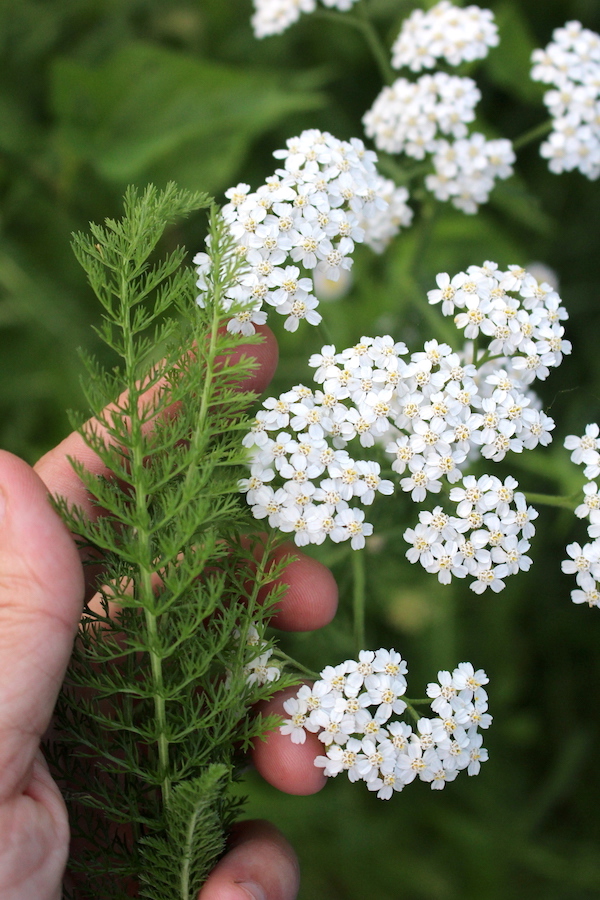
If you’re not familiar with yarrow, I’d suggest starting with this guide to identifying Yarrow in the wild. Alternatively, you can always purchase dried yarrow online or at a local herb shop.
Once you have yarrow, there are so many things you can do with it, both food and medicine. This list of 50+ ways to use yarrow only barely scratches the surface. Once you start using yarrow, I bet yarrow tincture won’t be the only way you put yarrow to use!
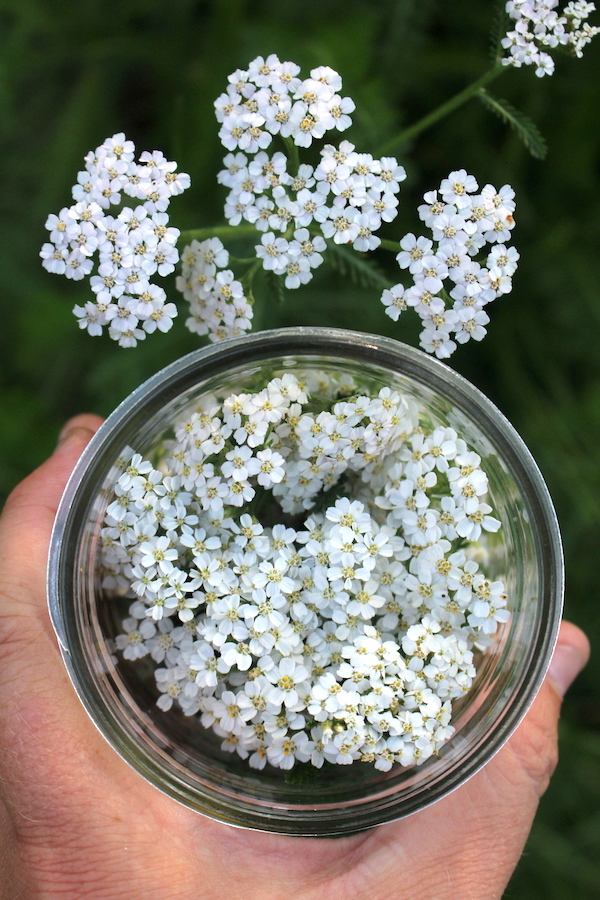
How to Make Yarrow Tincture
Making a tincture at home requires very little in the way of equipment and ingredients. Essentially, all you’ll need is a jar with a tight-fitting lid, a funnel, cheesecloth, and vodka.
For the jar, I recommend using a mason jar made with amber glass. A regular mason jar will work fine, but amber glass helps to block out sunlight and preserve the potency of the tincture. It’s no problem at all if you end up using a clear glass mason jar, you’ll just need to make sure you keep it stored in a dark place.
When it’s time to decant the tincture, a basic funnel lined with a few layers of cheesecloth will work beautifully.
I like to use Smirnoff vodka as the menstruum when I make tinctures (a menstruum is the term for the liquid in a tincture). It isn’t expensive, it has a clean taste, and it always produces excellent results.
You can use any type of ethyl alcohol that’s at least 40 percent (or 80 proof ) alcohol such as brandy, gin, or rum. You don’t want to go any lower than this since you need the alcohol to act as an antibacterial agent, otherwise there’s more of a potential for spoilage.
Never use rubbing alcohol (also known as isopropyl alcohol) for making tinctures as it’s toxic to ingest.
If you don’t want to use alcohol, you can make another kind of herbal extract called a glycerite tincture with food-grade vegetable glycerin. The method is pretty much exactly the same, and I’ve included instructions in the notes section of the recipe card below.
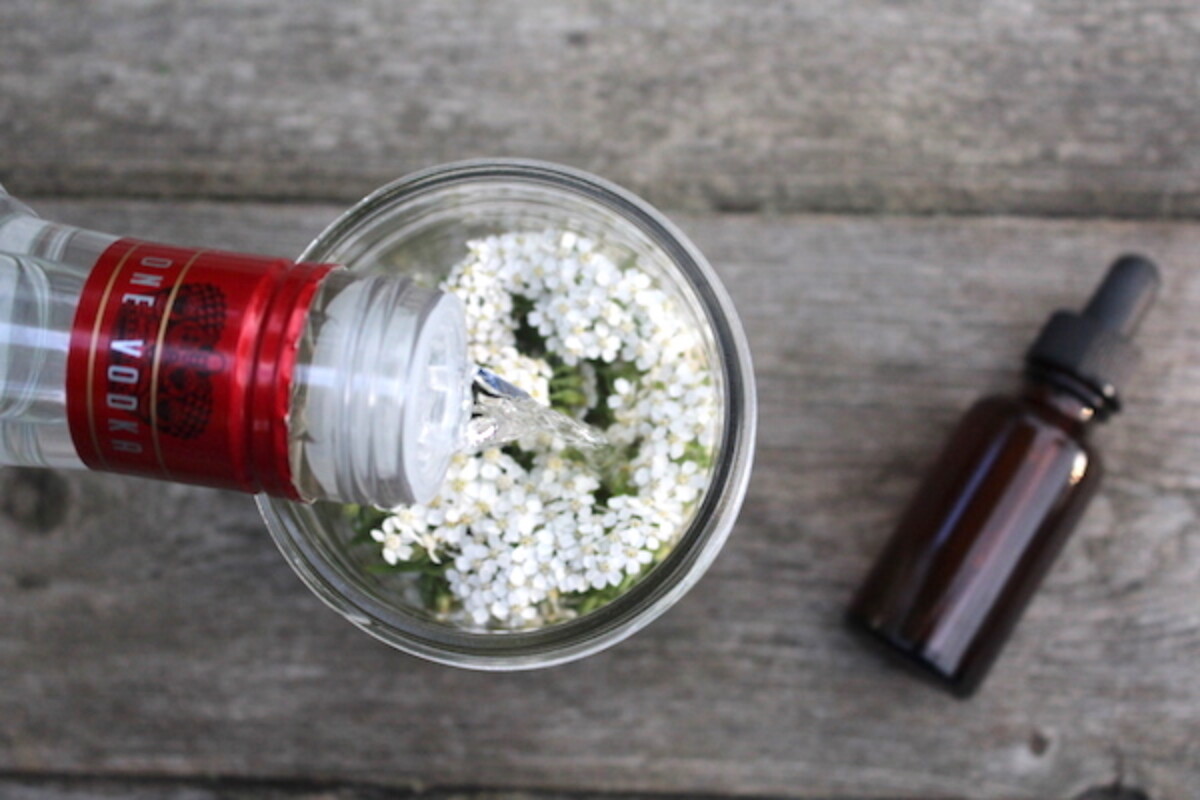
Traditionally, tinctures made with yarrow leaves are used externally, think cuts, burns, and bug bites, whereas tinctures made with yarrow flowers are taken internally for cold and flu symptoms. I sometimes just combine the leaves and flowers to make a multi-use tincture in a single bottle.
While I’m on the subject of bottles, I always store finished tinctures in amber glass bottles that have a dropper. Tincture dosages are measured by the dropperful, which takes out all the guesswork, and the amber glass helps preserve and protect the contents of the bottle.
To make a tincture with fresh yarrow leaves and flowers, roughly chop or grind up the plant matter — the more surface area that’s exposed the more potent the finished tincture will be. Fill a clean mason jar about 3/4 of the way full with chopped yarrow, resisting the urge to pack the jar too tightly.
Completely cover the yarrow with vodka, or your choice of high-proof alcohol, and seal the jar with a lid.
If you’re using dried yarrow flowers, you’ll only need to fill the jar 1/2 way full. Dried plant material is very concentrated when compared to fresh material and it absorbs liquid efficiently, which results in expansion as the tincture sits.
Store developing tinctures in a cool, dry place away from light. Every couple of days, give the jar a gentle shake. If you notice the alcohol level lowering, add a bit more until the yarrow is completely covered again. The alcohol prevents mold growth from occurring, so keep a close eye on it throughout the process.
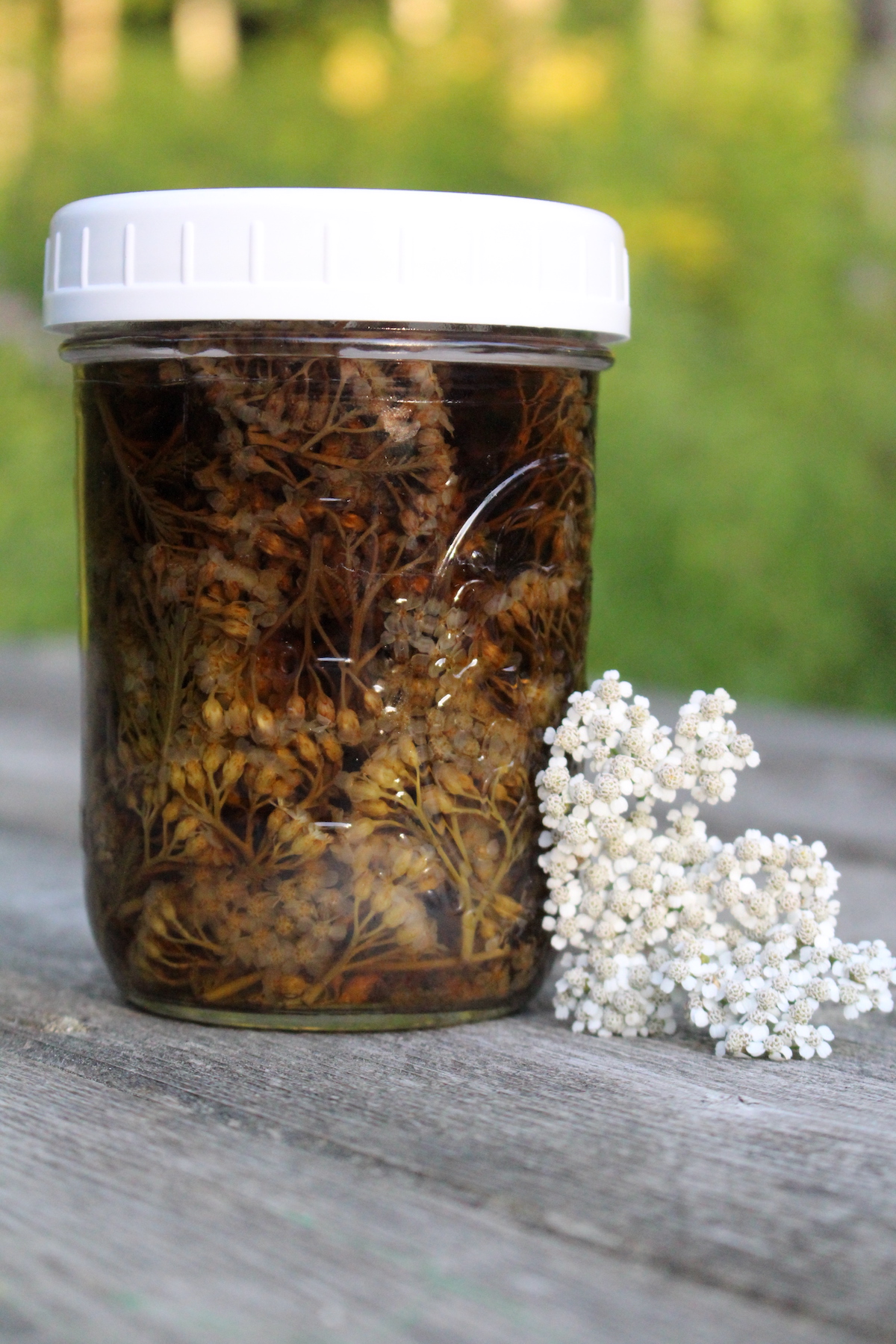
Tinctures need about 6 to 8 weeks to develop before they’re at full strength. Although it might be tempting to strain earlier, that extra time will ensure you’re rewarded with an effective, super-potent tincture.
When it’s time to strain your yarrow tincture, the process is easy.
Simply line a funnel with cheesecloth, or if you aren’t working with particularly fine yarrow particulates, you can just use a fine mesh strainer. If using a funnel, strain the tincture directly into a glass bottle, squeezing the remaining plant material to remove every single last drop of liquid.
Alternatives to Yarrow Tincture
You don’t have to wait 6 weeks to enjoy the therapeutic benefits of yarrow, if you have fresh yarrow available you can quickly make a poultice to use for external wounds.
Fresh yarrow leaves can be ground into a paste and applied directly to the skin in the event of cuts or burns. If you’re out on a hike or away from the campsite, you can even partially chew the leaves with your teeth until a rough paste is formed, although full disclosure: the leaves will be very bitter.
To keep the poultice in place, cover it with a length of gauze or muslin and secure with a loose knot.
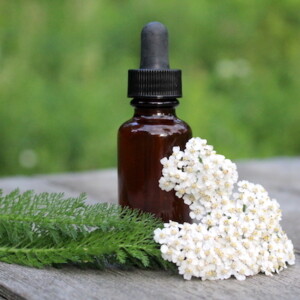
Yarrow Tincture
Equipment
Ingredients
- Fresh or dried yarrow flowers and leaves roughly chopped
- Vodka or other high-proof alcohol *see notes for making a glycerite tincture
Instructions
- Start by gathering fresh or dried yarrow flowers and leaves. For fresh yarrow, fill your mason jar about halfway, while dried yarrow will fill about one-third of the jar. The flowers, leaves, and stems all have medicinal properties, so include as much of the plant as you can. If you’re using dried yarrow, it’s a good idea to slightly crush it to help release the plant’s active compounds.
- Choose a high-proof alcohol for your tincture, such as vodka (for a neutral flavor), brandy, or rum. Pour the alcohol over the yarrow, ensuring the plant material is fully submerged. The alcohol should cover the herbs by at least 1 inch to prevent exposure to air, which could lead to spoilage.
- Close the jar tightly with the lid and shake it gently to mix the yarrow with the alcohol. Store the jar in a cool, dark space, like a cupboard or pantry, where it can steep for 4 to 6 weeks. The dark environment helps preserve the tincture’s potency and protects it from sunlight.
- For optimal extraction, shake the jar gently every 1-2 days to keep the plant material well mixed and submerged. Fresh herbs may float at the top, so you might need to push them down or add a little more alcohol to keep them covered. Regular shaking ensures the alcohol extracts the full range of beneficial compounds from the yarrow.
- After 4 to 6 weeks of steeping, it’s time to strain the tincture. Line a funnel with cheesecloth or a fine mesh strainer and place it over a dark glass bottle. Pour the tincture through the strainer, pressing down on the yarrow to extract as much liquid as possible. Discard the spent plant material.
- Label your bottle with the contents (Yarrow Tincture), the date it was made, and any recommended dosages or uses. Store your tincture in a cool, dry place, away from direct sunlight. Properly stored, yarrow tincture will last for several years.
Notes
Expected Yield
Fresh yarrow will release some moisture, meaning you’ll get slightly more tincture than the alcohol you start with. Dried yarrow will absorb some of the alcohol, resulting in slightly less liquid at the end. For a quart jar, you’ll need about 2-3 cups of alcohol; for a pint jar, around 1 to 1.5 cups. Keep the plant material submerged throughout the extraction process for the best results.Alcohol-Free Glycerite Option
If you prefer an alcohol-free tincture, you can make a glycerite using vegetable glycerin instead of alcohol. To make a yarrow glycerite, cover the dried yarrow with a mixture of 3 parts glycerin to 1 part distilled water. For fresh yarrow, you can use all glycerin and skip the water. Shake the jar daily and strain it after 6 to 8 weeks.Ways to Use Yarrow
Looking for more ways to use yarrow?
Homemade Herbal Remedies
Stock your medicine cabinet with a few more herbal remedies:
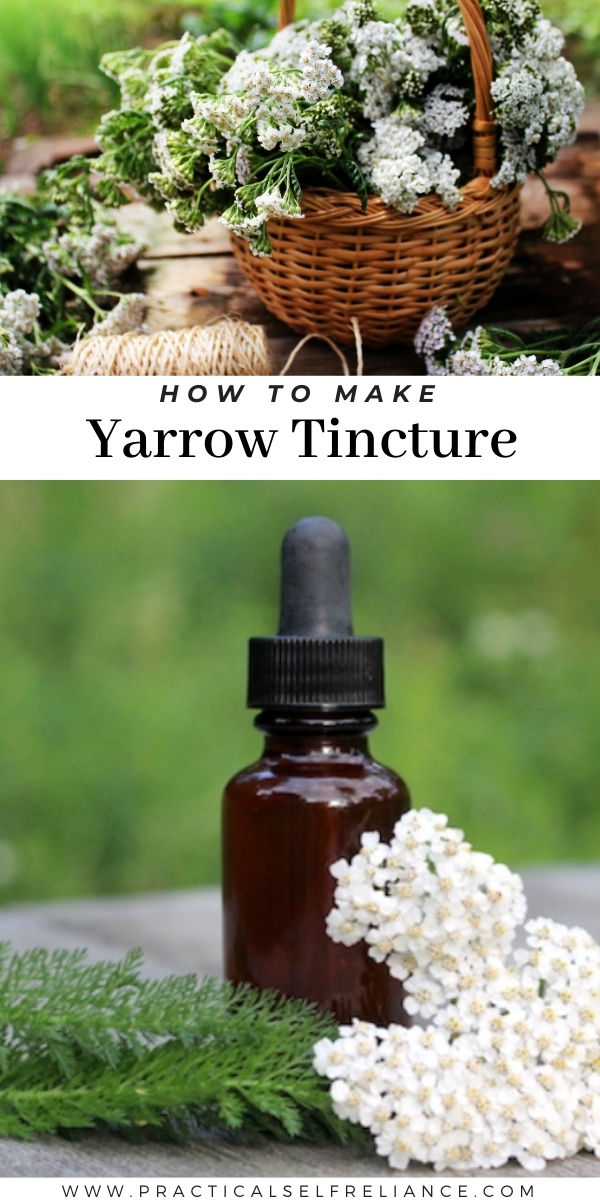


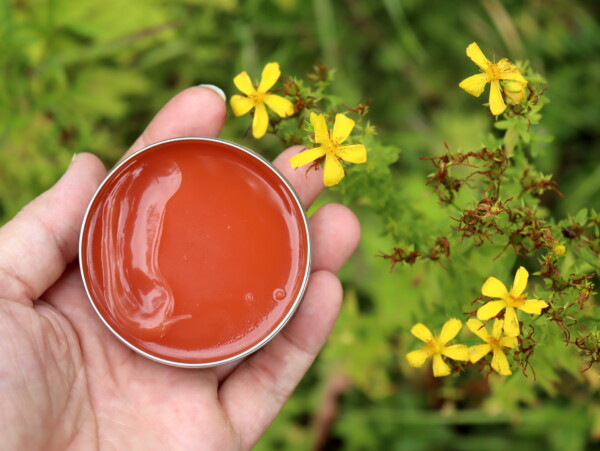
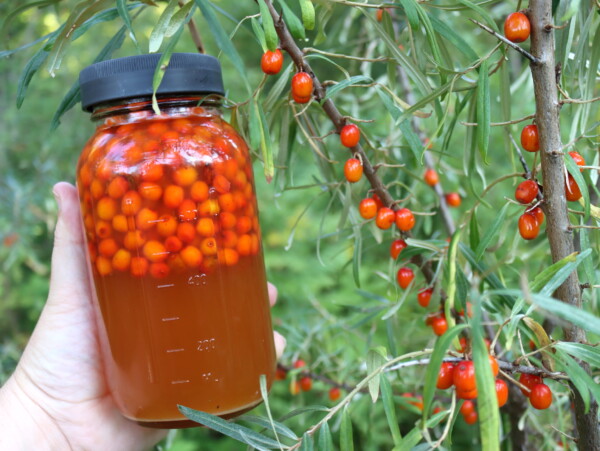










Ashley, does domesticated yarrow have the same healing properties as the wild?
This is a very common question and there are two different viewpoints on this. I am not aware of any studies done to determine the answer to your question. I would say that as long as the variety you are choosing is labeled as “Achillea millefolium” then it’s fine to use. The other thing to realize though is that growing conditions will also affect the plant’s properties.
Does the direction to use a 3/4 jar of fresh yarrow leaves change if I were to use 190 proof everclear instead of 80 proof vodka? Would it change the tincture’s effect at all?
You want to be sure that there is some water in your tincture in order to extract the water soluble properties but since you’re using fresh yarrow, there should be enough water in the plant material to accomplish this. The other thing that you can do is to add enough water to the mix in order to make it equivalent to an 80 proof alcohol.
liked the article but not knowing how much to take is ridiculous
Since we’re not clinical herbalists, we don’t like to give dosage information. We do encourage you to do your own research for dosages.
When you make the yarrow tincture, to use as a spray is it used directly as made or is it diluted with anything?
You can use it directly as made unless it is an open wound and then you may want to dilute it to lessen any stinging.
Do I, can I tincture with tea favorite % … for low alcohol tintcure
I’m sorry but I’m not sure exactly what you’re asking.
I can not swear to this, however, I think they are asking if they can mix a tincture, probably any tincture, can be mixed with their favorite tea, hopefully making it more palatable. And IF so what should the percentage of tincture be per say an ounce of tea/liquid. Just what I got from what was written.
And now I too am wondering if this is possible!!!
Thank you for helping with that. It is possible to add tincture to your tea or any other beverage to make it more palatable. There really is not a certain percentage required for this. You would just put whatever dosage of tincture you want to take into your cup of tea. The only time percentages really matter is when you are preparing something for long term storage to ensure that it doesn’t spoil.
I can’t find a place to purchase both dried yarrow leaves and dried yarrow flowers individually. They have dried flowers, or a bag of flowers and leaves combined. Would the mixture be safe to use both internally and externally? How about for children? I’d like to make a spray and a tincture.
Thank you.
Both leaves and flowers can be used in tincture. I am not aware of any contraindications for children but you should do your own research to determine if you feel it’s safe.
Hi – I made a tincture last year, promptly forgot about it, and found it again. I never took the yarrow out of the alcohol. Is the tincture still viable?
It should be fine as long as it looks and smells ok.
Your blog is amazing.: It covers everything so clearly and even gives the definition for those of us who may not quite understand what you are saying. I also liked that there was not much that you might have left out. Will be coming back to the site often.
Thank you so much. We’re so glad that you’re enjoying it.
What kind of doseage would you recommend for internal use when treating digestive issues?
I’m not a clinical herbalist, so I can’t give you specific recommendations, sorry.
Thinking about using this for childhood cuts and scrapes, does the vodka sting?
Yes, the alcohol would definitely sting on open wounds. I would recommend a salve for this type of application.
Are you able to add different herbs to this tincture as well?
Yes, you certainly can. Some people choose to tincture the herbs separately and then mix them together as needed but you can definitely add other herbs together in the same tincture.
Does the color of the yarrow flower matter? I have a variety of colors in my garden.
Excellent question and you’re not the only person to ask it in the comments today! Copying the same answer I just wrote for the other person here so you have it:
I’ve yet to find a definitive answer to that. In theory, it’s the same plant, and breeders just slowly selected for color variations over time. You’d think it’d have the same medicinal compounds, and it very well may. On the other hand, those may have been bred out by accident, and since it’s not tested there’s no way to know for sure.
I’ve only used the wild type of yarrow, so I have no personal experience with cultivated varieties. My gut instinct says they’d be the same or similar, but in truth, I have no idea about their actual safety or effectiveness. Use our best judgment.
Thanks for this! We have lots of wild yarrow growing around our property, now I have a use for it besides giving the bees something to collect pollen from.
Wonderful!
The yarrow I have is goldenrod yellow. Will different colors of yarrow work, or does it need to be the white? Thank you.
A very good question, and I’ve yet to find a definitive answer to that. In theory, it’s the same plant, and breeders just slowly selected for color variations over time. You’d think it’d have the same medicinal compounds, and it very well may. On the other hand, those may have been bred out by accident, and since it’s not tested there’s no way to know for sure.
I’ve only used the wild type of yarrow, so I have no personal experience with cultivated varieties. My gut instinct says they’d be the same or similar, but in truth, I have no idea about their actual safety or effectiveness. Use our best judgment.
I hadn’t been able to find anything either, but I thank you for looking! As always, love your posts!
Dr. Patrick Jones, veterinarian, herbalist, and naturopath, says all colors work. It also works internally for bleeding. The root is an effective analgesic as well.
Thank you for this excellent post. I’m going to make that tincture today!
How long does the tincture last?
The tincture should last indefinitely however after time, it is possible that it may start to lose some of its effectiveness.
I love yarrow and now have an easy way of using it as both a salve and a tincture. Thank you. Will keep watching.
Is it possible to use home made vinegar instead of the alcohol to make this tincture?
Yes, you can make a herbal-infused vinegar to preserve it as well, instead of using alcohol. You can also use food-grade vegetable glycerine to make a glycerite. Both of those are good options for internal use.
For topical use, I’m honestly not 100% sure there. I assume vinegar would be good for that, but that’s an assumption, and I imagine it’d sting a good bit. Glycerine is mostly used internally for children’s remedies or people trying to avoid ingesting alcohol, and it is used in soaps and body products too. In short, both of those are probably fine for external uses too, but I don’t have any sources to that effect and I’ve never tried it.